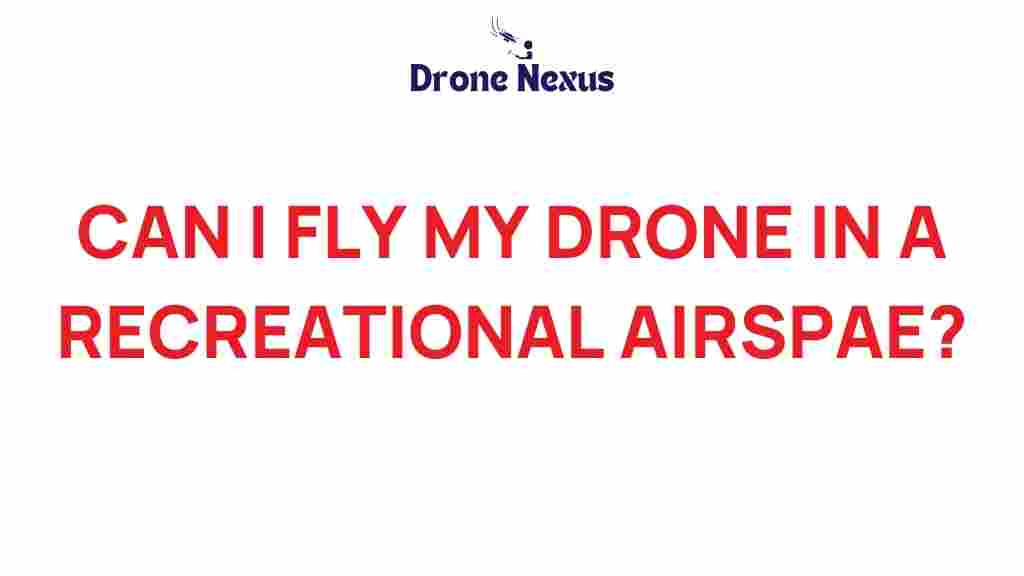Can You Legally Fly Your Drone in Recreational Airspace? Understanding Drone Regulations
Flying a drone can be an exhilarating experience, offering perspectives and opportunities that ground-based activities simply cannot match. However, with the rise in drone popularity, understanding drone regulations has become crucial for hobbyists and enthusiasts. This article aims to guide you through the maze of laws that govern recreational drone flying and ensure you’re flying safely and legally.
Understanding Drone Regulations
Before taking to the skies, it’s essential to familiarize yourself with the drone regulations that apply to recreational flying. These regulations can vary significantly by country, and even within different regions of the same country. In the United States, for instance, the Federal Aviation Administration (FAA) provides specific guidelines that must be adhered to when flying drones for recreational purposes.
Key Regulations for Recreational Drone Flying
- Registration: If your drone weighs more than 0.55 pounds (250 grams), you must register it with the FAA.
- Altitude Limit: You are not allowed to fly higher than 400 feet above ground level.
- Line of Sight: Always keep your drone within visual line of sight. This means you should be able to see your drone without any aids.
- No Fly Zones: Avoid flying in restricted areas, such as around airports, military bases, and other sensitive locations.
- Airspace Awareness: Familiarize yourself with the types of airspace. Recreational flyers are generally restricted to Class G airspace (uncontrolled airspace) unless you have special permissions.
- Weather Conditions: Only fly in good weather conditions. Avoid flying during rain, fog, or strong winds.
- Respect Privacy: Be considerate of people’s privacy and avoid flying over private property without permission.
- Do Not Interfere: Your drone should not interfere with manned aircraft operations.
Staying informed about these drone regulations is vital for safe and responsible flying. Always check for updates, as regulations can change frequently.
Step-by-Step Process to Legally Fly Your Drone
Here’s a simple step-by-step guide to ensure you’re flying your drone legally:
- Step 1: Register Your Drone
If your drone weighs over 0.55 pounds, visit the FAA website to register it. The registration process is straightforward and requires a small fee.
- Step 2: Know Your Airspace
Use tools like the FAA’s B4UFLY app to check the airspace where you plan to fly. This app provides real-time information about flight restrictions and requirements.
- Step 3: Check Local Regulations
In addition to federal regulations, check for any local laws or restrictions that may apply to drone use in your area.
- Step 4: Plan Your Flight
Choose a location that is legal and safe for flying. Ensure it is free of crowds, buildings, and sensitive areas.
- Step 5: Conduct a Pre-Flight Check
Before flying, inspect your drone for any mechanical problems. Check the battery level, propellers, and camera functions.
- Step 6: Fly Responsibly
As you fly, maintain visual line of sight, keep your altitude below 400 feet, and be aware of your surroundings.
- Step 7: Respect Others
Always be mindful of people’s privacy and safety while flying. If someone asks you to land, comply with their request.
Troubleshooting Common Issues
Even experienced drone pilots can face challenges. Here are some common problems and how to troubleshoot them:
- Drone Won’t Connect to Remote:
Ensure that both the remote and drone are charged. Try resetting both devices or checking for firmware updates.
- Drone Is Unstable in Flight:
Check for physical damage to the propellers and ensure they are clean and free of debris. Also, check your drone’s calibration settings.
- Lost GPS Signal:
Fly in an open area away from tall buildings or trees. Consider recalibrating your drone’s GPS before your next flight.
- Battery Draining Quickly:
Make sure you are using the correct battery for your drone model. Avoid flying in extreme temperatures, which can affect battery life.
If you encounter issues that you cannot resolve, consult your drone’s user manual or visit online forums for assistance.
Staying Informed on Changes to Drone Regulations
Regulations surrounding drones are continually evolving. It’s essential to stay updated. Here are some ways to keep informed:
- Check the FAA’s official website regularly for updates on drone regulations.
- Join online drone communities and forums where enthusiasts share the latest news and experiences.
- Follow drone-related news outlets and blogs that cover regulatory changes.
- Participate in local drone clubs or organizations that focus on responsible flying and advocacy.
For more resources, consider visiting the FAA’s website for comprehensive information on drone regulations.
Conclusion
Flying your drone in recreational airspace can be an enjoyable and fulfilling hobby, but it comes with responsibilities. Understanding and adhering to the drone regulations not only ensures your safety but also the safety of others. Always remember to keep your drone registered, stay informed on airspace restrictions, and fly responsibly. By following these guidelines, you can enjoy a hassle-free flying experience while contributing to the safe integration of drones into our airspace.
For further reading and resources, visit this link for more insights into the world of drones.
This article is in the category Safety and created by DroneNexus Team
